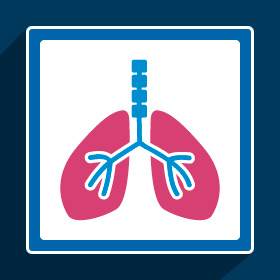What’s A Quanti Got To Do With It?
Chapter 2 of 'From Healthy Aides to Healthier Agency'
Watch chapter two sneak peak

Tuberculosis. Yep, tuberculosis. Probably not what you thought would lead to your great success but it can certainly lead you to your demise.
Not just a fatal disease, tuberculosis (TB) also happens to be one of the most feared contagious diseases around the world. Why should this matter to you? Because children and the elderly are named as the most at risk populations for getting TB by the Centers For Disease Control (CDC). Inadvertent exposure to the disease can result in adverse patient outcomes and cause illness among home care workers.

Furthermore, TB is most commonly found in people of Asian, African and Hispanic descent which account for roughly 58% of home care workers’ demographic in the US. Meaning, that your home care worker could be a TB carrier. The case rate among foreign-born persons in 2014 was approximately 13 times higher than among U.S.-born persons.
In this context, testing for TB and properly protecting your home care workers isn’t just good health policy it’s also sound business advice.
[edsanimate_start entry_animation_type= “fadeInLeft” entry_delay= “0” entry_duration= “1” entry_timing= “linear” exit_animation_type= “” exit_delay= “” exit_duration= “” exit_timing= “” animation_repeat= “1” keep= “yes” animate_on= “scroll” scroll_offset= “75” custom_css_class= “”]
How frequent is TB in the United States?
Ever since the mid 1990s TB cases in the United States have significantly fallen but that doesn’t mean they are a non-issue. In fact, 2014 represented the lowest decline in over a decade. With over 9,000 cases reported in 2014 the disease is not continuing to drop at the rate expected.

There is also the issue of multidrug resistant tuberculosis (MDR TB) which is immune to most treatments and continues to rise.
[edsanimate_end]
[edsanimate_start entry_animation_type= “fadeInLeft” entry_delay= “0” entry_duration= “1” entry_timing= “linear” exit_animation_type= “” exit_delay= “” exit_duration= “” exit_timing= “” animation_repeat= “1” keep= “yes” animate_on= “scroll” scroll_offset= “75” custom_css_class= “”]
Overall, the percentage of MDR TB cases decreased slightly from 1.4% in 2013 to 1.3% in 2014. Of the total number of reported MDR TB cases, the proportion occurring among foreign-born persons increased from 31% in 1993 to 88% in 2014.
If these statistics alone are not enough to convince you to test for TB,  perhaps the fact that it is one of the most required procedures nationwide should. Maybe you’ve been testing all this time for TB without knowing why?
perhaps the fact that it is one of the most required procedures nationwide should. Maybe you’ve been testing all this time for TB without knowing why?
Simply put, it’s often a state requirement. And, Medicare requires that agencies follow all state requirements and minimize any risk of illness to patients.But just because screening is highly recommended, and in some states required, doesn’t mean that all exams are born equal.
In the following chapter we’ll review the different choices for TB tests and the difference among them so you can get home care worker tested and placed faster to get back to business quicker without breaking a sweat.
[edsanimate_end]
